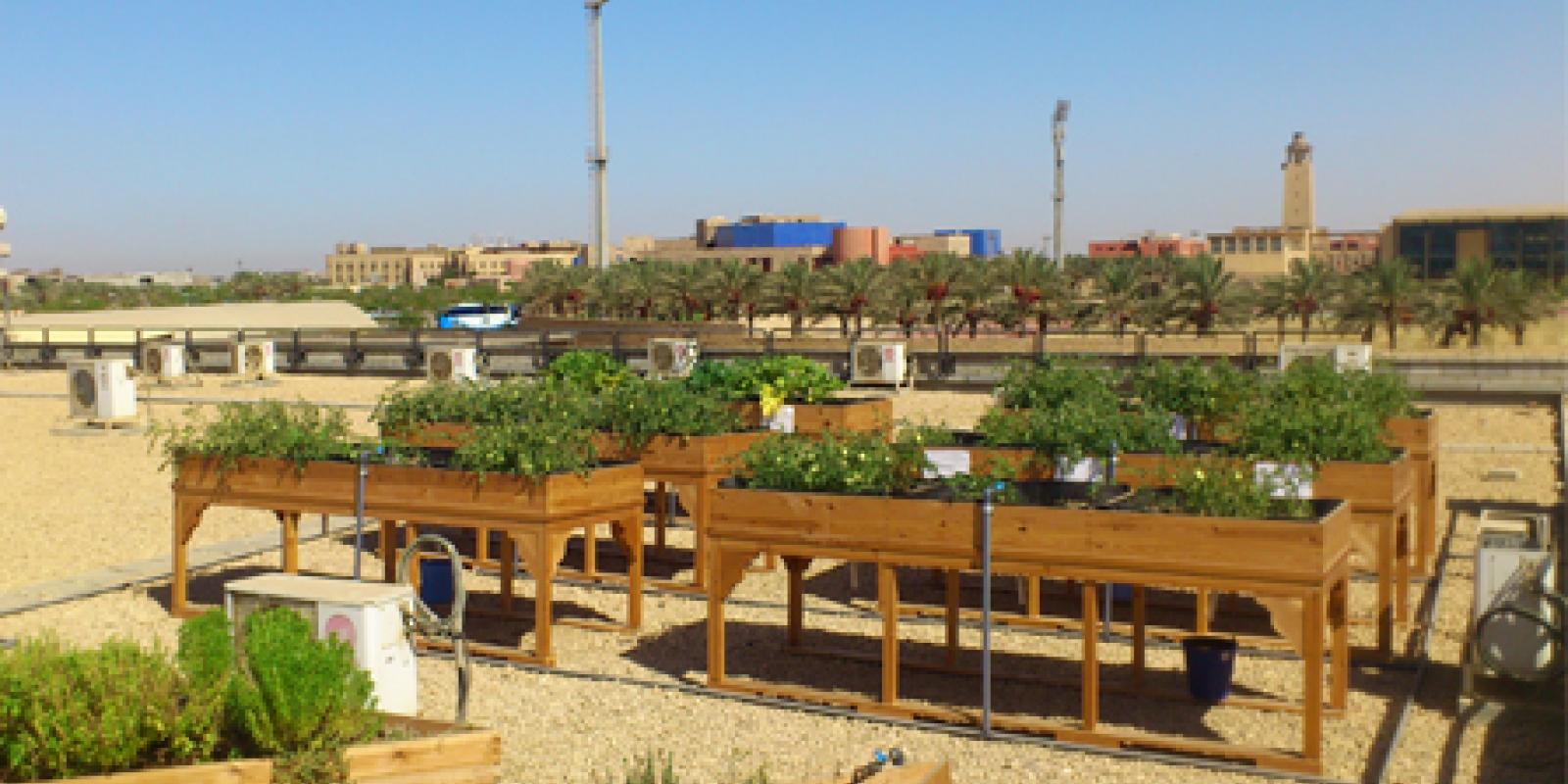
First Green Roof at AUC Provides Vegetation, Learning Space
The Desert Development Center (DDC), supported by the U.S. Forest Service and DC Greenworks, has recently established AUC’s first extensive green roof on the site office building where the DDC is located. Covered with vegetation and succulent plants, which are planted over a waterproofing membrane, the roof serves a variety of environmental, economic and aesthetic purposes, in addition to creating a space for learning and teaching.
“The extensive green roof is conceptualized as an experimental research project that tests different ways of growing on a roof, including wooden planters, a vertical garden system and an aquaponics system that involves a circular water exchange with a fish tank,” explained Cindy Youssef, research associate at the DDC.
The DDC decided to build a green roof in order to test how green roofs can work in Egypt. This includes understanding different technologies, substrate mixes, plants, irrigation schedules, drainage, weight and ways to work with aquaponics. The DDC will conduct research on the performance of the systems it installed so that it can measure the effects and benefits. This research will help the DDC advertise green roofs in Egypt and assist others with installations in the future.
Green roofs have several benefits, including the production of vegetables and enhancement of food security. “They also improve air quality, reduce the urban heat island effect that occurs in heavily-built conglomerations such as Cairo, and provide natural cooling for the rooms underneath,” explained Tina Jaskolski, DDC research coordinator. “Green roofs absorb solar radiation and act as carbon sinks, taking carbon dioxide out of the air, while providing a natural habitat for birds, bees and insects. And they look good.”
The extensive roof technique, which is cost-efficient and requires little maintenance, is novel in Egypt and tests locally available water-resistant layers. According to the Shaduf Project, an organization that studies sustainable water management systems, green-roof constructors have been struggling to find the appropriate materials needed for water containment. “One important difference of roof planting in Egypt, compared to other countries, is the need for irrigation, and where there is irrigation, you have to manage the drainage water,” said Hassan Husseiny, DDC water management specialist.
The weight of the green-roof components is another aspect that may present an issue on some of Cairo’s roofs. As conventional soil and sand are heavy, the DDC roof garden planters are filled with different types of media. Mixes of peanut shells, perlite, compost, sand, vermiculite (a fine volcanic glass) and crushed clay pots are lighter, provide a fertile ground for the plants and hold water. The experiment is set up to compare the effectiveness of different media mixes and the benefit of nutrients produced by fish for plant growth. By testing different green-roof systems, the DDC aims to provide solutions for a wide range of budgets. “The planning for the rooftop gardens included how best to raise awareness among the broadest audience of Cairenes, as well as demonstrate a wide variety of individual practices,” said Peter Ensign from the International Programs Department of the U.S. Forest Service, who designed the garden and helped the DDC with the installation. “The installation was unique — a first of its kind. Everyone brought their creativity, team spirit and sweat to the project.”
Jaskolski noted that in addition to “admiring bees and butterflies on the roof, and harvesting the first organic tomatoes and zucchini,” the green roof has already become a space for teaching and learning. Students from the Environmental Biology class taught by Arthur Bos, assistant professor of biology, are collecting data on irrigation, drainage and plant growth as part of a fieldwork component for the course.
